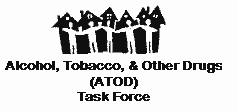|
Colon cancer is among the
cancers causing the highest number of fatalities in America. It
claims approximately 55,000 lives each year -- more than either
breast or prostate cancer. Since colon cancer, in particular, has
been linked with diets that are high in fat and low in fiber, it is
believed that the opposite, or low-fat, high-fiber diets, will help
prevent this type of cancer.
"Currently, most Americans
consume 12 to 16 grams of dietary fiber per day," said Kelly
Tappenden. "That's about half of what most people should be
consuming per day."
Tappenden is a U of I researcher and faculty member in the College
of Agricultural, Consumer and Environmental Sciences. She listed the
recommended intake of fiber per day for men under age 50 as being 38
grams per day, while women under 50 should be getting 25 grams per
day. For men over age 50, 30 grams of dietary fiber is recommended
and for women over 50, 21 grams per day.
Since 90 percent of men and
women over the age of 78 suffer from diverticulosis (a weakness in
the walls of the colon, which can become infected) it may be
confusing that the recommended fiber intake is lower for people over
age 50, when it would seem that they need the benefits of fiber even
more.
Tappenden explained: "The
reasoning is that the older we get, the less energy we expend, and
the less we tend to eat. Therefore, fiber is still really important
for elderly people, but at the end of the day it's not realistic to
expect these individuals to consume the same amount as younger
people who might be eating 50 percent more food."
[to top of second column in
this article]

 |

Insoluble dietary fiber, like
that found in wheat bran and brown rice, increases fecal bulk and
decreases the length of time that food is in the body. Soluble
fibers, like oats, legumes, fruits and vegetables, decrease blood
cholesterol and slow glucose absorption, which can help prevent type
2 diabetes. Fiber also has the ability to regulate moisture,
preventing both constipation and diarrhea.
Tappenden stressed that reading
the nutrition panel on a package of food is vital. Consumers also
should become familiar with the dietary fiber content in foods that
don't come with nutrition labels on them, such as fruits and
vegetables, because the fiber content isn't always what you'd
expect.
"An apple, including the skin,
has 3 grams of dietary fiber, whereas one cup of lettuce has only
one gram, and six to eight slices of cucumber have zero. People
think if they have a salad that they're getting all of this fiber,
but they're not," said Tappenden.
Tappenden said that the fiber
content lingo on labels is regulated. She recommends looking for the
words "high fiber" on packaged foods. Those words mean that the
fiber content is 5 grams or more. Foods labeled a "good
source" contain 2.5 to 4.9 grams of fiber. And "more or added fiber"
means the food contains at least 2.5 grams, which is still more than
the standard serving size of the traditional food.
One last caution, however, from
Tappenden is, "People need to add fiber to their diet gradually.
They could end up feeling sick if they add too much too quickly."
A
good source of information on nutritional content, including fiber,
is the University of Illinois' nutritional analysis tool. It can be
found online at
http://www.nat.uiuc.edu/ by choosing
NAT Tool Version 2.0 on
that site.
[University of Illinois press
release]
|



